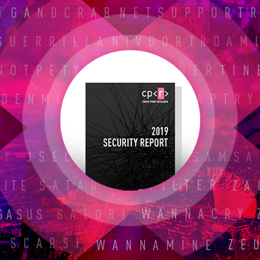
Check Point’s 2019 Security Report
2018 introduced a challenging threat landscape. Threat actors consistently improved their cyber weapons, adopted new methods and adapted their attacks to emerging technologies. And although it may have seemed the past year was quieter, this is far from the case.
In the 2019 Security Report we review the latest threats facing organizations in the fifth generation of the cyber landscape and provide you with our observations and insights from the past year.
These attacks can be characterized as more stealth like and targeted. Whether carried out by cyber criminals or nation states, the targeted attacks of 2018 revealed that financial and espionage motivations are not the only driving factors. With more attacks that shut down entire organizations, ‘boutique’ ransomware attacks were a strong trend during 2018 as was the rise of crypto-jackers, that infected 10 times more organizations than ransomware but only 1 in 5 IT professionals are aware they were affected.
We also review of the predictions made in our 2018 Security Report and assess to what extent these proved accurate. Along the way we provide cutting edge analysis from our in-house experts to arrive at a better understanding of today’s threat landscape.
We then take a look under the hood of today’s cyber crime world and show how this ecosystem remains a core part of the cyber threat landscape. Whether it is ransomware, banking trojans, key-loggers or cryptojackers, we look at what these malware types are and how they are now more accessible to potential cyber criminals due to Malware-as-a-Service (MaaS) services. This is the age of the democratization of cybercrime.
We then hone in on how threat actors are able to keep one step ahead by targeting the weakest points in an organization’s IT infrastructure – the cloud, mobile and IoT. Indeed, these platforms offer a threat actor a much higher chance of success and fewer obstacles to overcome due to them being far less protected. However, 65% of IT professionals still underestimate the damage caused by attacks on the Cloud.
As a result, their profits can often be higher due to more private data stored on mobile devices and larger databases and resources held in the cloud. So with account takeovers becoming increasingly common, and the introduction of GDPR in 2018, potential data breaches and other attacks are simply too costly to ignore.
The report concludes with predictions for 2019 and how we think the cyber threat landscape will evolve in the year ahead, looking specifically at the categories of Cloud, Mobile, Network, AI, IoT and Nation State attacks. And finally, to stay ahead of these trends and predictions, we conclude with some expert recommendations and requirements that organizations should adopt in order to prevent fifth generation cyber attacks.









